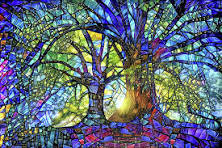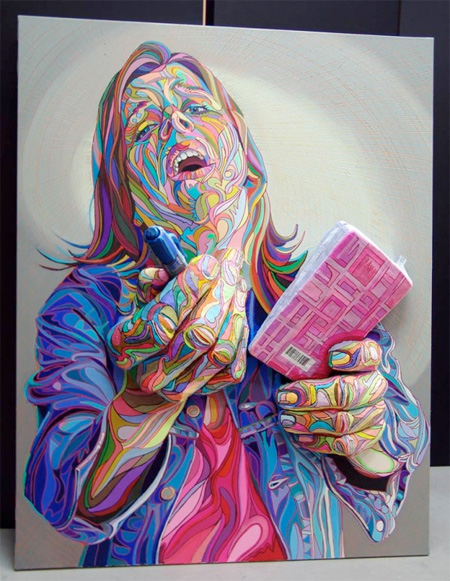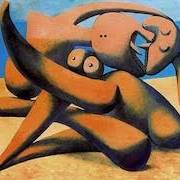The Beauty and Craftsmanship of Glass Art
Glass art is a mesmerizing form of artistic expression that has captivated audiences for centuries. From delicate blown glass sculptures to intricate stained glass windows, the versatility of glass as a medium allows artists to create stunning works that blend beauty with craftsmanship.
The History of Glass Art
Historically, the art of working with glass dates back to ancient civilizations such as the Egyptians, Romans, and Mesopotamians. These early artisans discovered the transformative properties of heating sand and other natural materials to create glass objects that were both functional and decorative.
Techniques in Glass Art
Modern glass artists employ a wide range of techniques to manipulate and shape this versatile material. Some popular methods include:
- Blown Glass: Artists use a blowpipe to shape molten glass into various forms, creating unique sculptures and vessels.
- Fused Glass: Layers of colored or clear glass are fused together in a kiln to create intricate patterns and designs.
- Stained Glass: Pieces of colored glass are cut and assembled using lead came or copper foil to form elaborate windows, panels, and mosaics.
- Engraved Glass: Artists use tools to etch designs onto the surface of glass objects, adding texture and detail.
The Beauty of Glass Art
One of the most captivating aspects of glass art is its ability to play with light. Translucent and transparent, glass interacts with light in ways that can create dazzling effects, casting colorful shadows and reflections that enhance the visual appeal of each piece. Whether displayed in natural sunlight or illuminated from within, glass art has a luminous quality that draws viewers in.
The Future of Glass Art
Innovative artists continue to push the boundaries of traditional glassmaking techniques, experimenting with new forms, textures, and finishes. Contemporary glass art incorporates elements such as mixed media, digital technology, and environmental themes, reflecting the evolving landscape of art in the 21st century.
As a timeless medium that combines skillful craftsmanship with artistic vision, glass art remains a vibrant and dynamic field that inspires awe and admiration in all who encounter it.
Exploring Glass Art: Techniques, History, Artists, and Collecting Tips
- What is glass art?
- How is glass art made?
- What are the different techniques used in glass art?
- What are the historical origins of glass art?
- Who are some famous glass artists?
- Where can I see examples of glass art?
- How do I start collecting glass art?
What is glass art?
Glass art is a captivating form of artistic expression that encompasses a wide range of techniques and styles. At its core, glass art involves manipulating molten glass into various forms, such as sculptures, vessels, and decorative objects. Artists use methods like blowing, fusing, staining, and engraving to create intricate and visually stunning pieces that showcase the unique properties of glass. With its ability to interact with light in mesmerizing ways, glass art transcends mere craftsmanship to become a medium through which artists convey emotion, beauty, and creativity.
How is glass art made?
Glass art is created through a meticulous process that requires skill, precision, and creativity. One common method used in glass art is blown glass, where artists gather molten glass on the end of a blowpipe and shape it into various forms through blowing, shaping, and manipulation. Another technique is fused glass, where layers of colored or clear glass are fused together in a kiln to create intricate patterns and designs. Stained glass involves cutting and assembling pieces of colored glass using lead came or copper foil to form elaborate windows, panels, and mosaics. Engraved glass art utilizes tools to etch designs onto the surface of glass objects, adding texture and detail. These techniques showcase the versatility of glass as a medium for artistic expression, resulting in captivating works that blend craftsmanship with creativity.
What are the different techniques used in glass art?
Glass art encompasses a diverse range of techniques that artists utilize to manipulate this versatile material into stunning creations. Some common techniques in glass art include blown glass, where molten glass is shaped using a blowpipe to create intricate sculptures and vessels. Fused glass involves layering colored or clear glass pieces that are then fused together in a kiln, resulting in beautiful patterns and designs. Stained glass art involves assembling colored glass pieces using lead came or copper foil to form elaborate windows, panels, and mosaics. Engraved glass art employs tools to etch intricate designs onto the surface of glass objects, adding texture and detail to the finished piece. These techniques showcase the skill and creativity of artists working with glass as they push the boundaries of traditional craftsmanship to create unique and captivating works of art.
What are the historical origins of glass art?
The historical origins of glass art can be traced back to ancient civilizations such as the Egyptians, Romans, and Mesopotamians. These early cultures discovered the transformative properties of heating sand and other natural materials to create glass objects that were both functional and decorative. The art of working with glass evolved over time, with techniques like blowing, casting, and staining glass becoming more refined and sophisticated. These ancient artisans laid the foundation for the rich tradition of glass art that continues to inspire artists and audiences around the world today.
Who are some famous glass artists?
Glass art has been shaped by the creative genius of numerous renowned artists throughout history. Some of the most celebrated figures in the world of glass art include Dale Chihuly, whose vibrant and monumental glass sculptures have captivated audiences worldwide with their bold colors and organic forms. Lino Tagliapietra is another prominent name known for his mastery of traditional Venetian glassblowing techniques, creating intricate and elegant pieces that showcase his unparalleled skill. Additionally, Toots Zynsky is recognized for her innovative approach to glass art, using heat-formed threads of glass to produce dynamic and colorful vessels that blur the line between sculpture and functional object. These artists, among many others, have left an indelible mark on the world of glass art with their creativity, vision, and technical expertise.
Where can I see examples of glass art?
To experience the beauty and diversity of glass art, there are various places where you can see stunning examples of this captivating medium. Art galleries and museums often feature exhibitions dedicated to glass art, showcasing a range of styles and techniques by talented artists. Additionally, specialized glass art studios and workshops may offer guided tours or demonstrations where you can witness the creation process up close. Many cities also host annual glass art festivals and events that highlight the work of local and international glass artists, providing a vibrant platform for enthusiasts to explore and appreciate this unique art form.
How do I start collecting glass art?
Starting a collection of glass art can be a rewarding and enriching experience for art enthusiasts. To begin your journey as a glass art collector, it is essential to first explore various styles, techniques, and artists to develop a deeper appreciation for the medium. Visiting galleries, attending art fairs, and researching online platforms can help you discover emerging talents and established masters in the field of glass art. Building relationships with artists, curators, and fellow collectors can provide valuable insights and guidance as you start acquiring pieces for your collection. Remember to collect what speaks to you personally, whether it’s striking blown glass sculptures, intricate fused glass creations, or captivating stained glass works. Each piece you acquire will not only enhance your collection but also tell a unique story of artistic expression and craftsmanship.




